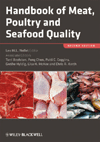ISO-certified lab confirms high levels of omega-3 fatty acids in flounder
Wild Alaska Sole Association highlights nutritional profile of Wild Alaska Sole.

Courtesy of the Wild Alaska Sole Association
A recent study by ISO-certified lab Exact Scientific confirms the high levels of omega-3 fatty acids for all species of Wild Alaska Sole, also known as flounder.
Omega-3s can be helpful in the prevention and treatment of heart disease, healthy development of babies and children and the improvement of brain health, mood, immune function and vision, among other benefits.
"Wild Alaska Sole is a mild, delicious white fish that's as nutritious as it is versatile," said Pat Shanahan, executive director of the Wild Alaska Sole Association. "Many consumers don't realize that just two servings of Wild Alaska Sole provide the USDA's recommended omega-3 intake per week - all in a delicious, affordable, high-quality protein. Whether labeled as Alaska sole or flounder, it's the same great fish, so shoppers can feel confident they're making a smart, healthy choice."
In addition to omega-3s, Wild Alaska Sole features 20 grams or more of protein per 3.5-ounce serving. This fish also has high levels of phosphorus and selenium.
Source: Wild Alaska Sole Association
Looking for a reprint of this article?
From high-res PDFs to custom plaques, order your copy today!








